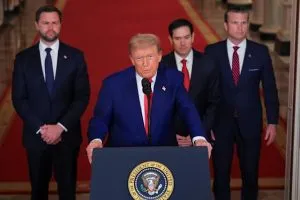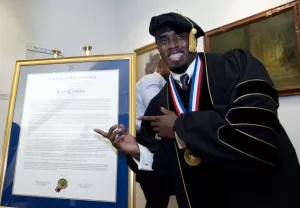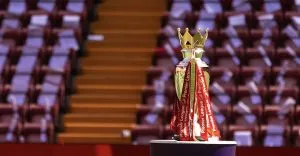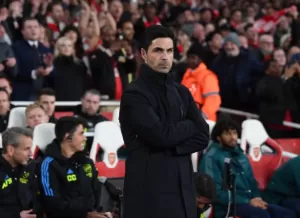Trump and Putin Meet in Alaska for High-Stakes Summit on Russia-Ukraine Conflict

Anchorage, Alaska – On August 15, 2025, President Donald Trump touched down at Joint Base Elmendorf-Richardson in Anchorage, Alaska, for a historic face-to-face meeting with Russian President Vladimir Putin. The summit, which began at approximately 3 p.m. ET (11 a.m. Alaska time), marks a significant moment in U.S.-Russia diplomacy, with the primary focus on exploring a potential ceasefire in the ongoing Russia-Ukraine war. The meeting, described by Trump as a “listening exercise,” comes amid heightened global tensions and complex geopolitical challenges, including the looming expiration of the New START nuclear arms control treaty in February 2026.
A Diplomatic Encounter in the Far North
The decision to hold the summit in Alaska, a neutral yet symbolically significant location given its proximity to Russia, underscores the gravity of the discussions. The choice of Joint Base Elmendorf-Richardson, a secure military facility, reflects the high level of coordination and security surrounding the event. Trump, who has emphasized his ability to engage directly with world leaders, framed the meeting as an opportunity to hear Putin’s perspective firsthand. “I’m here to listen, to understand what’s driving this conflict, and to see if we can find a path forward,” Trump said in brief remarks upon arrival.
The Russian delegation accompanying President Putin is notably high-powered, signaling Moscow’s seriousness about the talks. The group includes Foreign Minister Sergey Lavrov, Defence Minister Andrey Belousov, Finance Minister Anton Siluanov, Presidential Aide Yuri Ushakov, and Special Envoy Kirill Dmitriev. This lineup suggests that Russia is prepared to discuss not only the Ukraine conflict but also broader strategic issues, including economic and military cooperation.
The Russia-Ukraine War: A Central Focus
The Russia-Ukraine war, now in its fourth year, remains one of the most pressing global crises, with devastating human and economic costs. The conflict has reshaped European security, strained global energy and food markets, and heightened fears of escalation between NATO and Russia. Trump, who campaigned on a platform of prioritizing American interests and reducing U.S. involvement in protracted foreign conflicts, has expressed a desire to broker a resolution. However, his approach has drawn scrutiny from critics who argue that any deal must avoid conceding too much to Moscow’s demands.
Putin, for his part, has indicated openness to discussing a ceasefire but has maintained Russia’s hardline stance on territorial gains in eastern Ukraine. In comments made prior to the summit, Putin emphasized the importance of addressing “security guarantees” for Russia, including limits on NATO’s eastward expansion and Ukraine’s military capabilities. These demands are likely to clash with U.S. and European priorities, which emphasize Ukraine’s sovereignty and territorial integrity.
While the White House has tempered expectations for a breakthrough, sources familiar with the preparations suggest that the talks could lay the groundwork for future negotiations. “This is a starting point, not a finish line,” a senior U.S. official said, speaking on condition of anonymity. “The goal is to establish a direct channel of communication and test the waters for a potential deal.”
Nuclear Arms Control and Broader Issues
Beyond the Ukraine conflict, the summit is expected to touch on the future of nuclear arms control, a critical issue given the impending expiration of the New START treaty. Signed in 2010, the treaty limits the number of deployed strategic nuclear warheads and delivery systems for both the U.S. and Russia. Putin has publicly called for discussions on renewing or replacing the agreement, warning that its lapse could trigger a new arms race. Trump, who has expressed skepticism about arms control agreements in the past, has not yet signaled his administration’s stance on the issue but is reportedly open to exploring options.
Other topics on the table may include cybersecurity, counterterrorism, and economic relations, though these are secondary to the Ukraine and arms control discussions. The presence of Russia’s finance and defense ministers suggests that economic sanctions and military dynamics could also feature in the talks.
A Packed Agenda: Bilateral Lunch and Press Conference
Following the initial closed-door meeting, Trump and Putin participated in a bilateral lunch, providing an opportunity for more informal discussions. The day’s events culminated in a joint press conference, where both leaders addressed the media and outlined their perspectives on the talks. While specific outcomes were not immediately clear, the press conference offered a rare glimpse into the dynamics between the two leaders, whose personal rapport has been a subject of global fascination and debate.
Trump, known for his unorthodox diplomatic style, emphasized the importance of direct engagement. “Nobody solves problems better than when you sit down, face-to-face, and talk it out,” he said during the press conference. Putin, meanwhile, struck a more reserved tone, stressing that any progress would require “mutual respect” and acknowledgment of Russia’s security concerns.
Global Reactions and Domestic Implications
The summit has drawn intense scrutiny both domestically and internationally. In the U.S., Trump’s critics have raised concerns about his approach to Putin, citing his past reluctance to criticize the Russian leader. Some Democratic lawmakers and foreign policy analysts have warned that the meeting risks legitimizing Russia’s actions in Ukraine without securing concrete concessions. Supporters, however, argue that Trump’s willingness to engage directly with Putin demonstrates pragmatic leadership and a commitment to reducing global tensions.
In Europe, reactions are mixed. Ukrainian officials have expressed cautious hope that the talks could lead to a de-escalation but remain wary of any agreement that compromises their country’s interests. NATO allies, particularly those in Eastern Europe, are closely monitoring the summit for signs of shifts in U.S. policy toward Russia.
Looking Ahead
As the summit concludes, the world awaits further details on any agreements or understandings reached between Trump and Putin. While a comprehensive resolution to the Russia-Ukraine war remains unlikely in the short term, the meeting could set the stage for continued diplomatic efforts. The stakes are high, not only for the two leaders but for global stability, as the outcomes of this encounter could shape U.S.-Russia relations and the trajectory of the Ukraine conflict for years to come.
For now, the international community is left to parse the nuances of the Anchorage summit, a rare moment of direct dialogue between two of the world’s most influential and polarizing leaders. As Trump and Putin depart Alaska, the question remains: can this meeting pave the way for peace, or will it simply mark another chapter in a complex and contentious geopolitical saga? Only time will tell.







